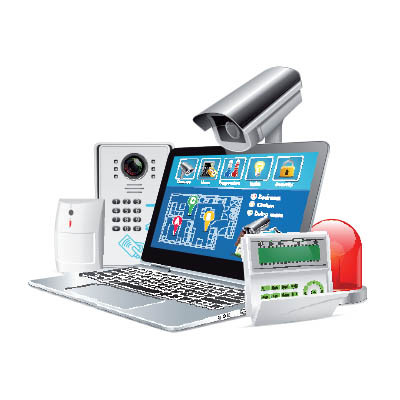Data storage is hardly the most interesting topic out there, but it’s one that your business needs to consider if it’s going to flourish in the modern era. The cloud offers you real benefits from traditional on-premises file storage, all while being cheaper and more efficient. Let’s take a look at three reasons you might consider cloud storage over in-house infrastructure for your company’s data storage needs.
Advanced Automation Blog
There are plenty of reasons why a business might lose some or all of its data, ranging from cyberattacks to hardware failure. Unfortunately, there isn’t any real reason your business won’t be one of the unlucky ones.
This makes it imperative that you prepare for this eventuality. Let’s discuss how to do so with the help of data redundancy.
Security should be at the top of any business owner’s list of priorities. While cybersecurity often gets the spotlight, physical security is just as critical; after all, if someone can walk in and steal your equipment, all the firewalls in the world won’t help you. Fortunately, technology has made it easier than ever to protect your business from physical threats. Here are some physical security technologies small businesses can use to keep their assets safe.
We all know companies collect a lot of data. After all, your business is no exception to this rule, and you likely collect significant consumer data to facilitate operations. But if you get the itch to protect your personal privacy (and you should), there are ways to limit how much advertisers, criminals, and other companies can gain access to. Here are just a couple of ways.
An expiration date helps to make sure you aren’t buying fast-turning foods at the grocery store, and now, the technology industry is making strides to establish a similar standard. A new industry report recommends new legislation pushing for End-of-Life (EoL) disclosure, which would, in theory, allow businesses and consumers alike to make more informed purchasing decisions. What does this mean for your business?
Technology is the cornerstone of most modern business operations, making supporting this technology more important than ever. That’s one reason we’re so proud to provide IT assistance to our fellow businesses.
As we’ve done so, however, we’ve noted that some assistance is required more often than other forms of support. Let’s go over what some of these usual suspects are, and why it is so helpful to have someone (ideally, us) assisting you in managing them.
For businesses, one of the scariest threats out there is that of compliance fines for not holding up your end of the bargain with your customers’ data. But what goes into compliance, and what does it look like? We won’t be digging into the nitty-gritty of what these specific regulations require; rather, we’re performing a broad analysis of what businesses should be doing to ensure compliance, regardless of the protocol or the industry.
One of the biggest things that businesses need to consider today, from an IT front, is how artificial intelligence fits in. One way many companies are integrating AI into their businesses is through chatbot technology. Today, we will tell you everything you need to know to get started with chatbot technology.
Running a small business comes with many challenges: managing customers, handling inquiries, scheduling appointments, and marketing your services, just to name a few. While these tasks are mandatory for the creation of a successful business, they can also be extraordinarily time-consuming. That’s where chatbots come in.
Antivirus is a staple security solution for businesses and everyday PC users, but have you ever considered how it works? By thinking through some of the details, you might gain a greater understanding of how antivirus works, what it does, and why you need to keep it updated. Today, we’re going to discuss just that, starting from square one.
The modern business is more technologically driven than ever before, but there are some out there who haven’t embraced the benefits of technology and have alternatively chosen to stick with their more analog, tried and true methods. In today’s blog, we’ll discuss why technology is important and how to get started if your business is stuck in the 20th century.
We will always reinforce how critical it is for everyone in any workplace to have a grasp of cybersecurity best practices, regardless of their role or responsibilities. However, based on a survey conducted by UK-based cybersecurity firm Ramsac, this baseline is not being met by a long shot.
Why do we say this? Simple: this survey revealed that one in three adults failed a cybersecurity test designed for 11-year-olds.
Running a business is basically a never-ending series of potential disasters just waiting to happen. Some are easy to fix, change a process here, tweak a strategy there—but others? They can completely derail your operations if you’re not prepared. That’s where smart technology steps in to save the day.
Let’s look at some nightmare scenarios that could spell disaster unless you have the right IT in place.
The entire purpose of modern IT is to improve the processes that work requires us to do. Today, we wanted to address a few business priorities—productivity, cybersecurity, and accessibility—that the right tech can help you accomplish, explicitly exploring how different tools can contribute to your success.
Tech can be a real pain for small businesses, especially if you don’t have a dedicated IT person handling everything. Most businesses have someone who sort of knows their way around tech, but for a small team, that’s a lot to put on one person. That’s where managed IT services come in. It’s used not just for its convenience but because it actually makes a business owner’s life easier in ways they might not even realize.
You don’t want to get spammed; nobody does. Unfortunately, it happens to EVERYONE, and it’s just getting worse. All this unwelcome correspondence happens over the phone, through email, and especially on social media. In today’s blog, we’ll talk a little bit about how social media puts users at risk and what you can do to keep that risk from becoming a problem for you.
New technology is always a bit intriguing. It can also be scary for some. Business owners typically only see the cost, even if it presents solutions to their organizational problems and can err on the side of caution as to not too much strain on their budget. There are a couple of really cutting-edge technologies businesses can use today that can help them confront problems they have. Let’s take a look at them in today’s blog.
With remote work remaining popular, employees can benefit from flexibility and work-life balance, but at the cost of certain challenges on the business side. The big one is security, as your network ends up spread out across multiple locations rather than siloed in-house. Here are three rules you should consider when planning out how to approach remote work.
Think about the apps you use daily—Google Drive, Netflix, Spotify, even Instagram. All of these run on cloud-based services, which basically means they store and process everything online instead of relying on one physical device. Businesses, big and small, are making the same shift because, honestly, it just makes sense. Let’s take a look at why you should be looking to use cloud services in your business.





















